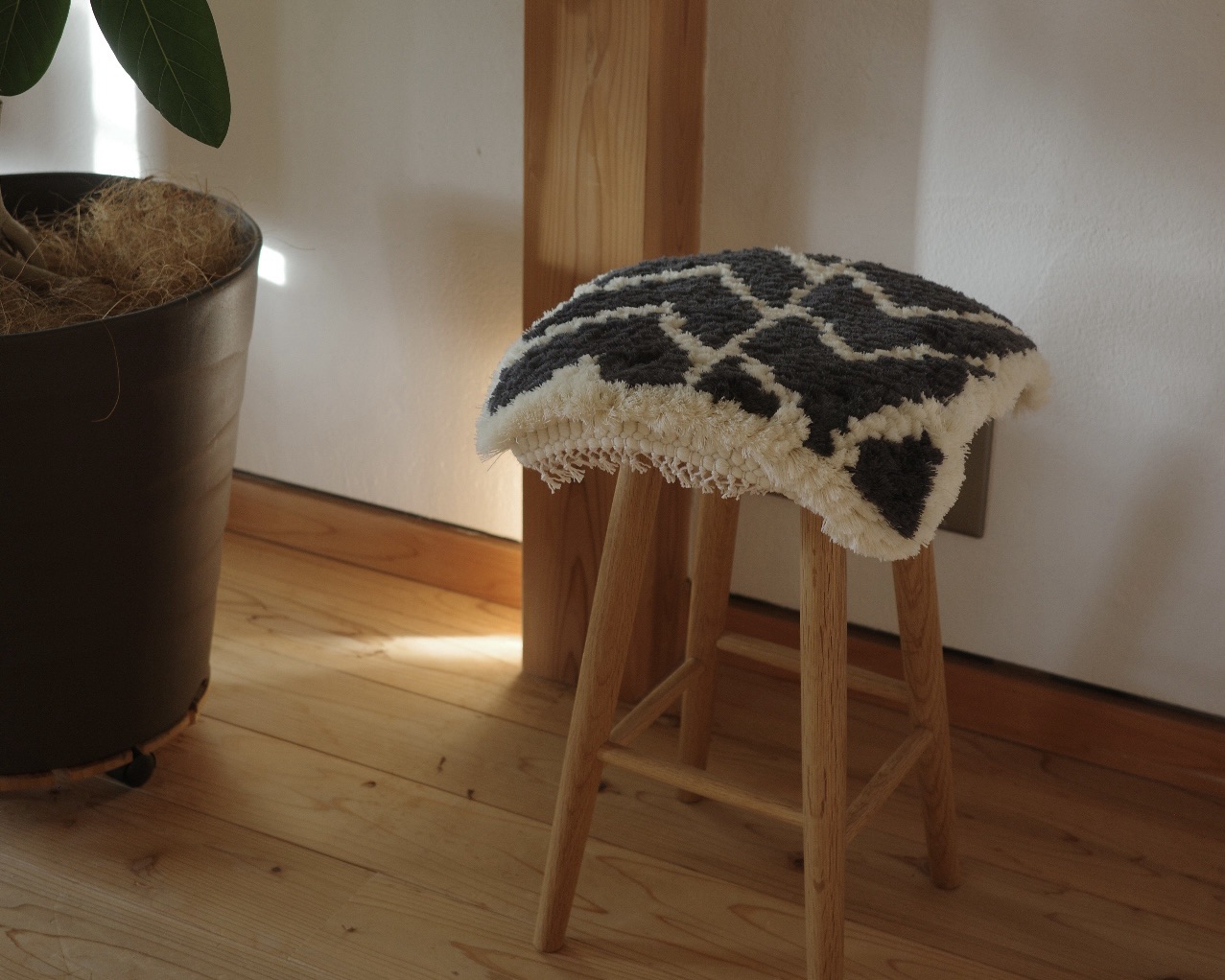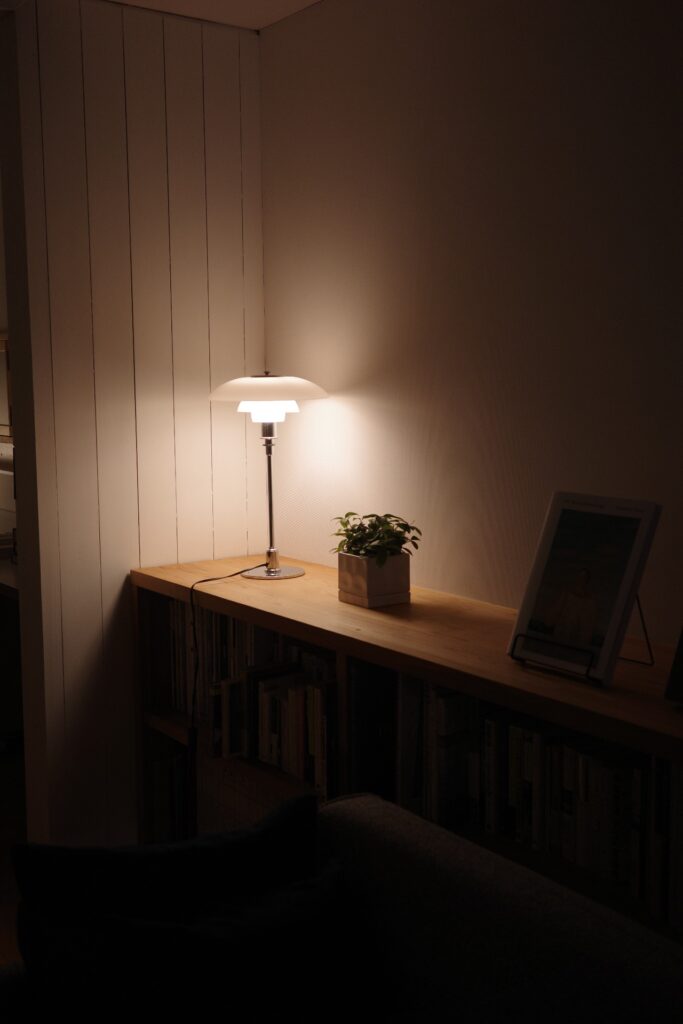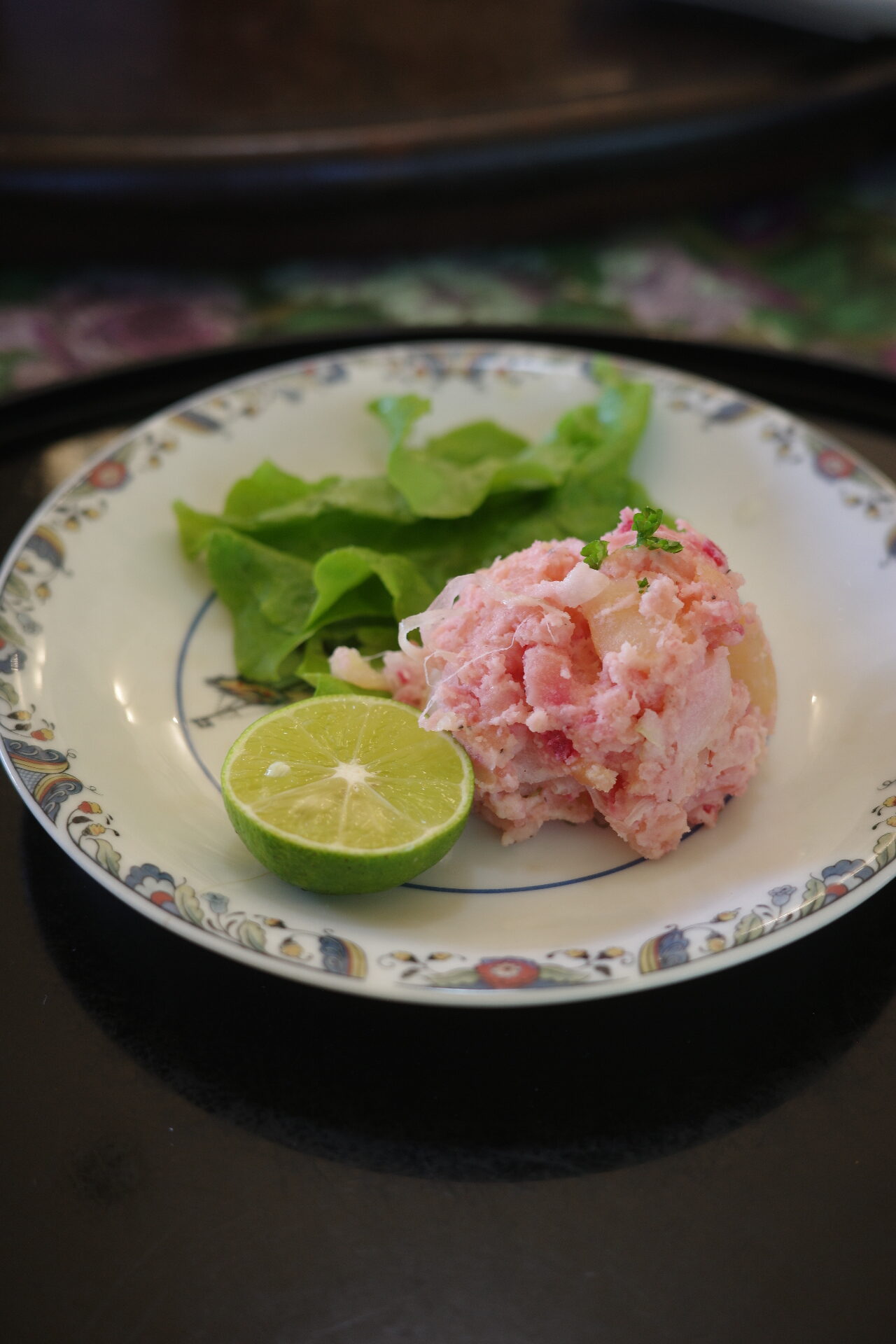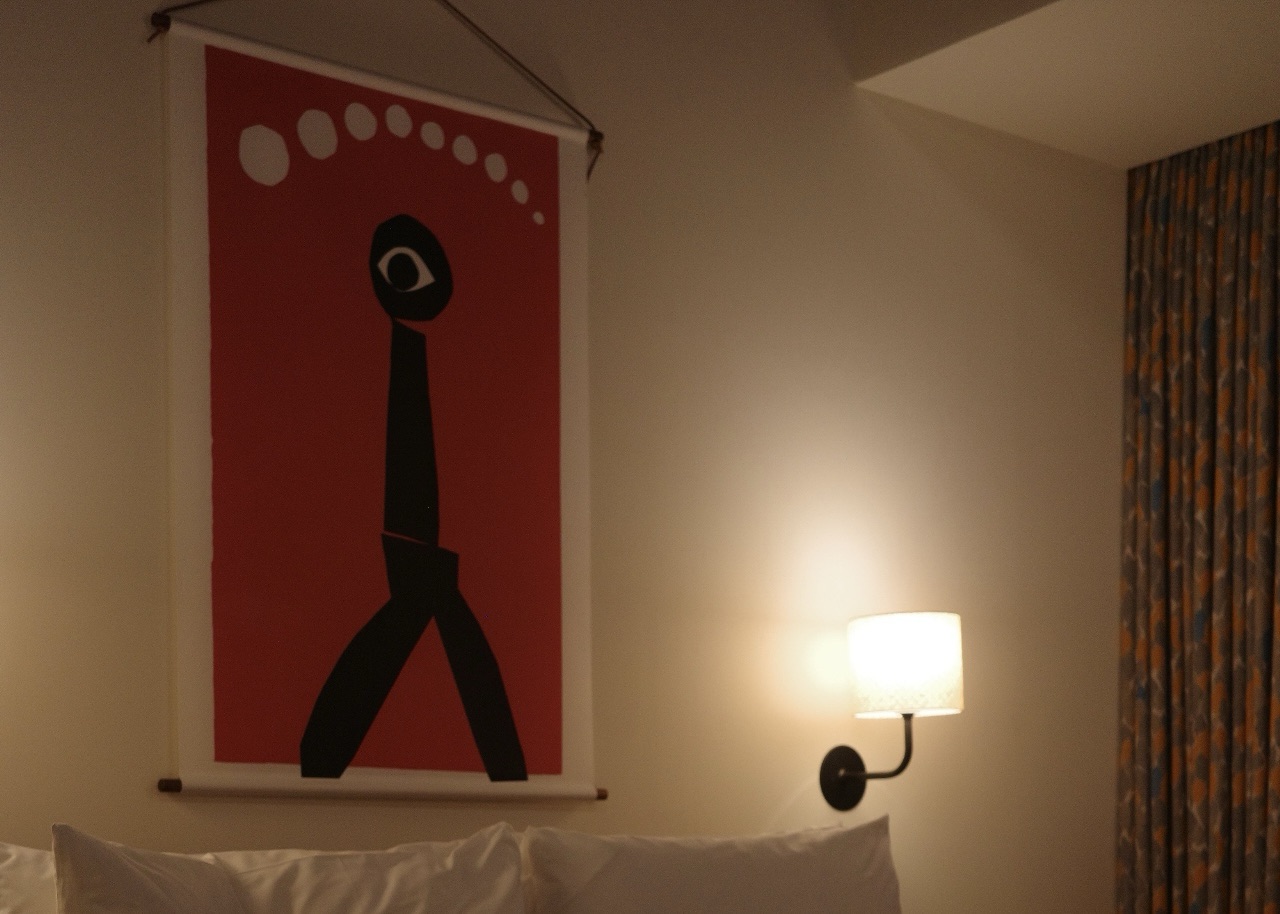
A “friendly” hotel from Portland
Ace Hotel is based in Portland, Oregon, USA. Portland is often featured in Japanese magazines, and POPEYE’s “Why Don’t You Go to Portland?” feature (July 2014, No. 807), I learned that the Ace Hotel is a landmark of this city. I remember being shocked and excited by the hotel’s at-home atmosphere, which allows local residents to use the hotel along with guests, rather than a hotel that only guests can enter. It was also revolutionary that there was a café connected to the lobby and bicycles that could be rented for exploring the city. The Ace Hotel was a pioneer in the now common practice of hotels becoming “cultural hubs for the local community” with attached cafes and bike rentals.
Finally, Ace Hotel came to Kyoto!
The Ace Hotel, such an admired hotel, has opened in Kyoto’s Shinpukan building. This is its first entry into Asia. The concept of Kyoto is “East Meets West. Kengo Kuma designed the building, which utilizes the design of the former Kyoto Central Telephone Station built in the Taisho era (1912-1926), and Shayaro Yunoki, a dyeing artist, created the artwork in the lobby and guest rooms. I am often surprised to see the East and Japanese culture from a foreigner’s point of view, so I was excited to see what surprises await me at the Ace Hotel.
Cafe-like lobby and iconic lighting
The friendly atmosphere of Portland has been preserved, and the lobby, which resembles a café, is where people spend their time, whether working or relaxing. The lobby includes a reception area and a corner with Ace Hotel original goods. The interior design was done by American firm Commun Design, which has worked on Ace Hotel in the past. The lighting by Kengo Kuma , using inorganic materials, is impressive, as if in response to the wooden structure by Kuma Kengo, using Japanese cedar from Kyoto. A fusion of organic and inorganic materials. This is the embodiment of “East Meets West. Behind the pot-patterned tapestry painted by Samiro Yunoki is Stumptown Coffee Roasters, a leader in third-wave coffee.
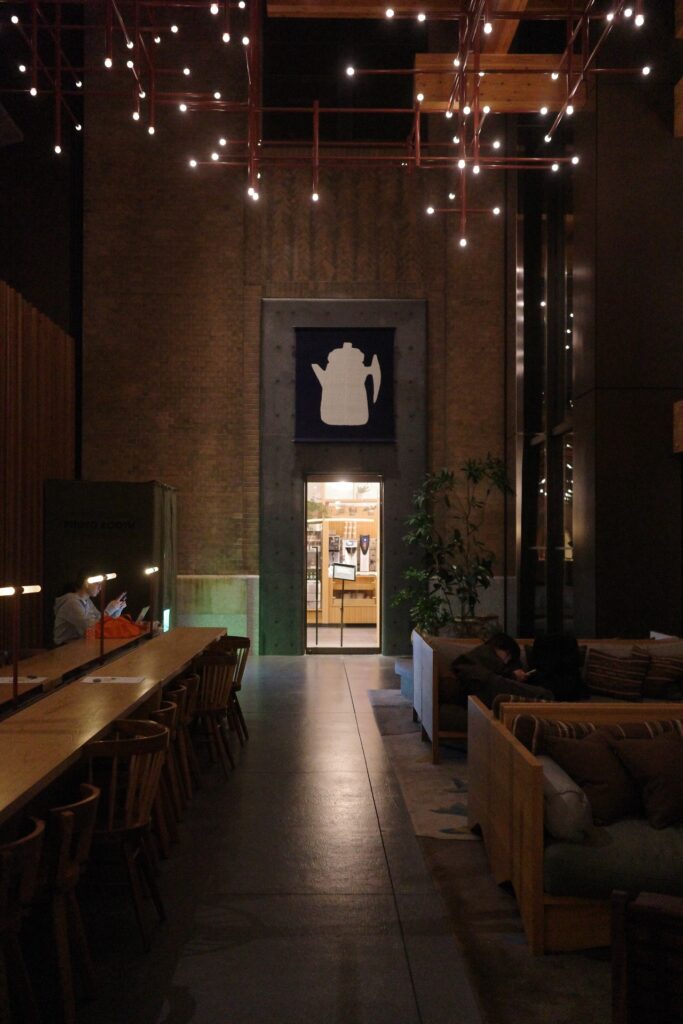
Lobby at night. The passageway leading to the cafe looks like a secret entrance.
Artwork by Japanese artists and craftsmen
Ace Hotel has always valued collaboration with local creators. Yunoki’s handwriting is used for the room numbers, which also serve as lighting, and the crafty font is a perfect match for the wood and Japanese paper. Upon entering the room, you are greeted with a large piece of artwork by Yuzuki, which has become a symbol of the room. It is the symbol of the room. On the bedside, there is a cute bedside light with scales by Mina Per Honen, and near the record player, a light by Kobishiya Chubei glows faintly. The simple panels or signs that are often used, such as “Don’t wake me up” and “No cleaning required,” are small brooms by Matsunoya. What a charming idea that captured my heart. The room key is wooden and designed like a print. I think that even in these small items, there is a rich sense of playfulness that makes the design important.
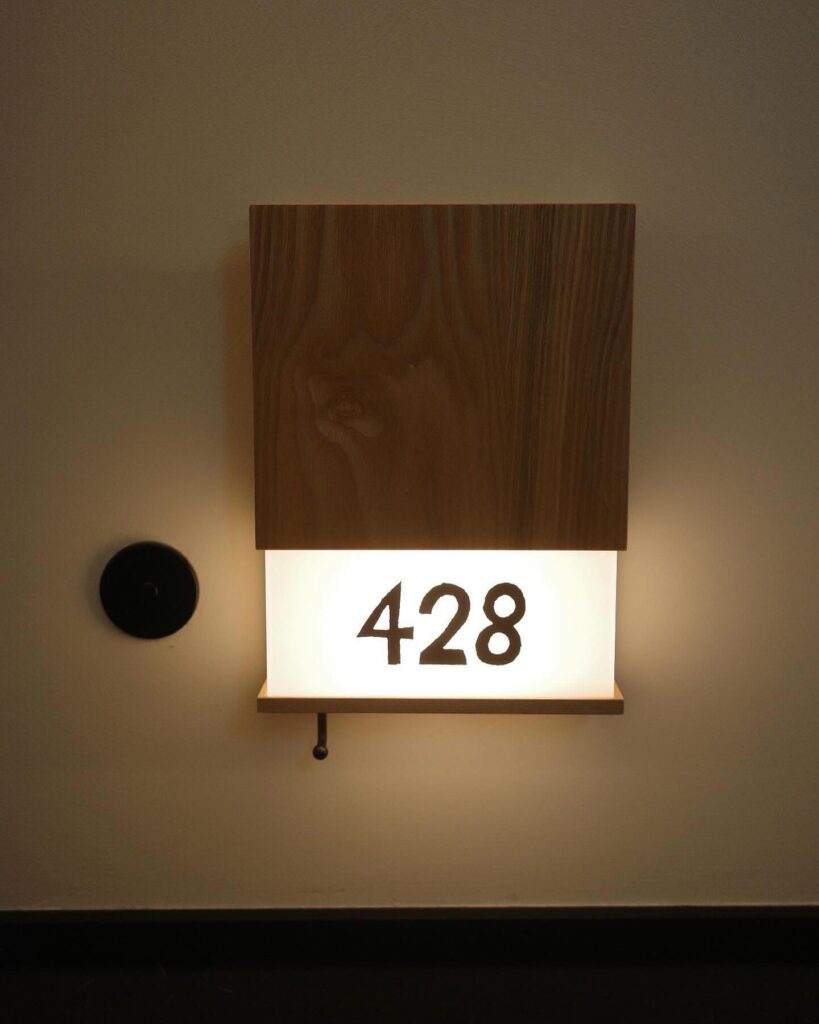
Washi brand “SIWA” is in charge of the art panels in the guest rooms. Yunoki’s text is printed on Naoron, a strong Japanese paper that does not tear even when wet.
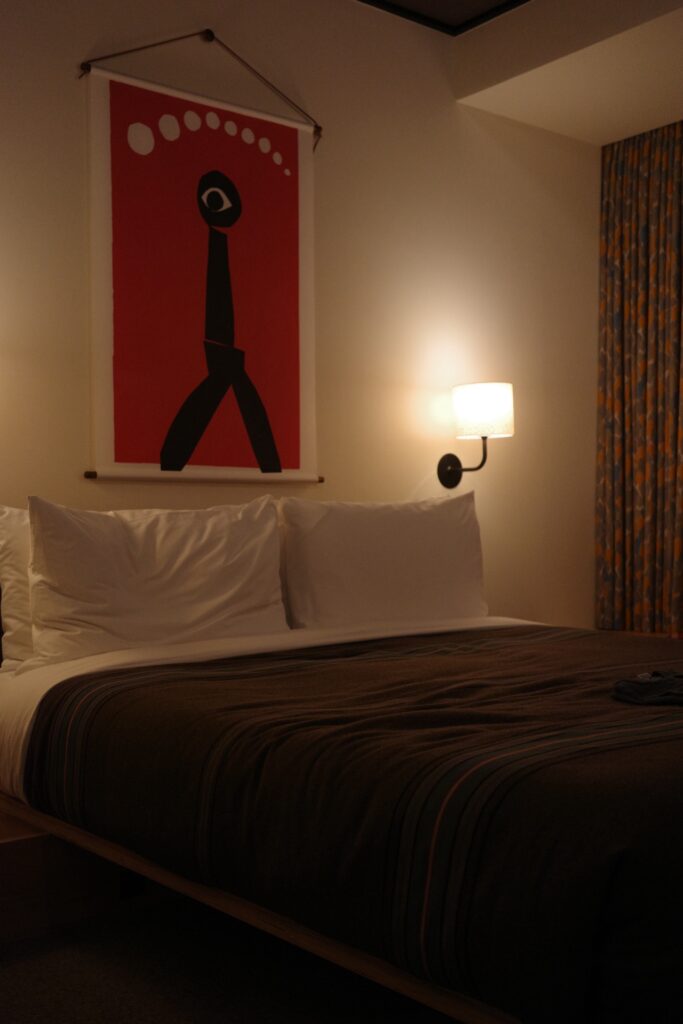
Stay in a standard king room. The bedspread was a “Perdleton” blanket. It was sold in the lobby.
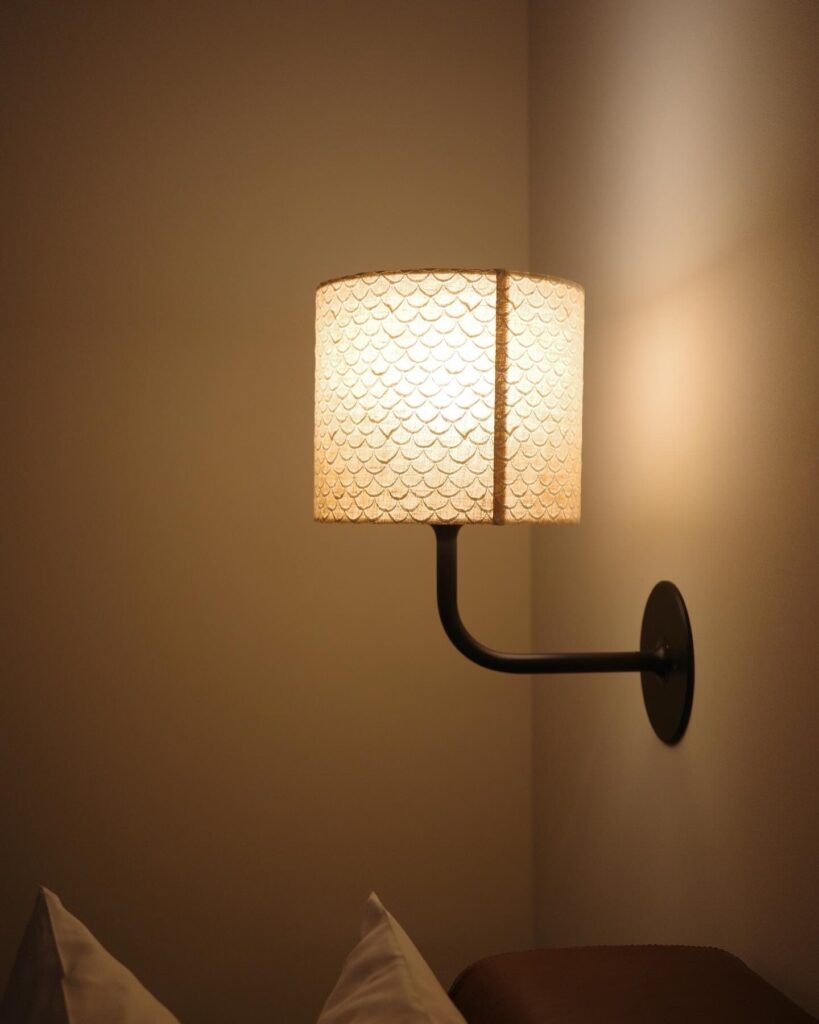
Bedside lighting in textile by Mina Perhonen. The black steel complements the shade.
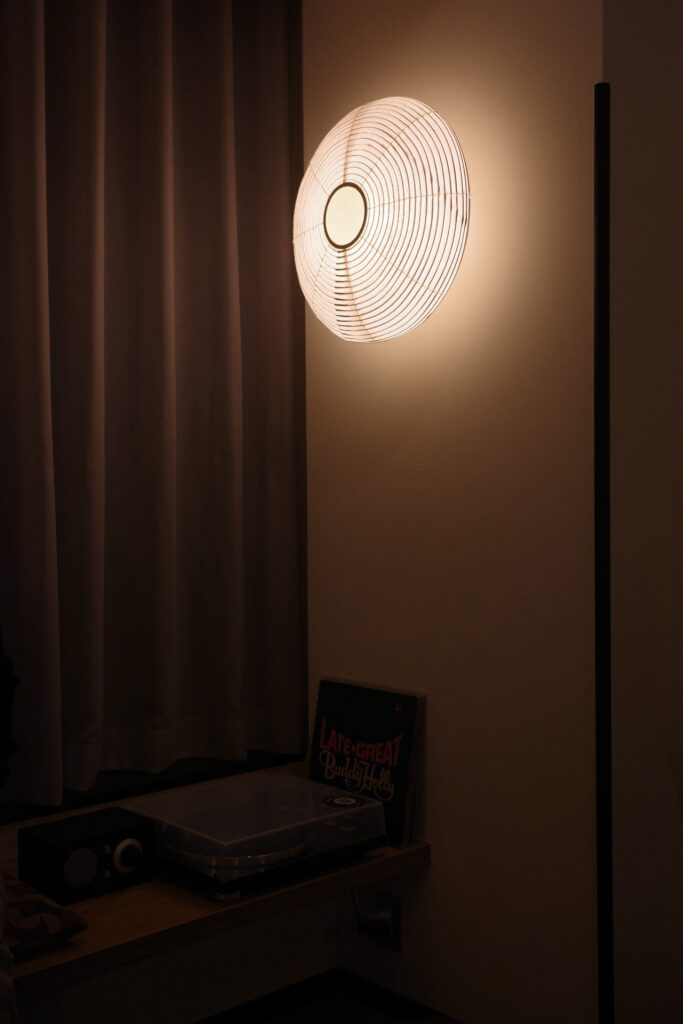
Kohishiya Chubei’s lighting is called “Kyo Jibari Chochin,” which is made by forming a number of parallel bamboo strips in a circle, and is characterized by its high durability and beautiful lines.
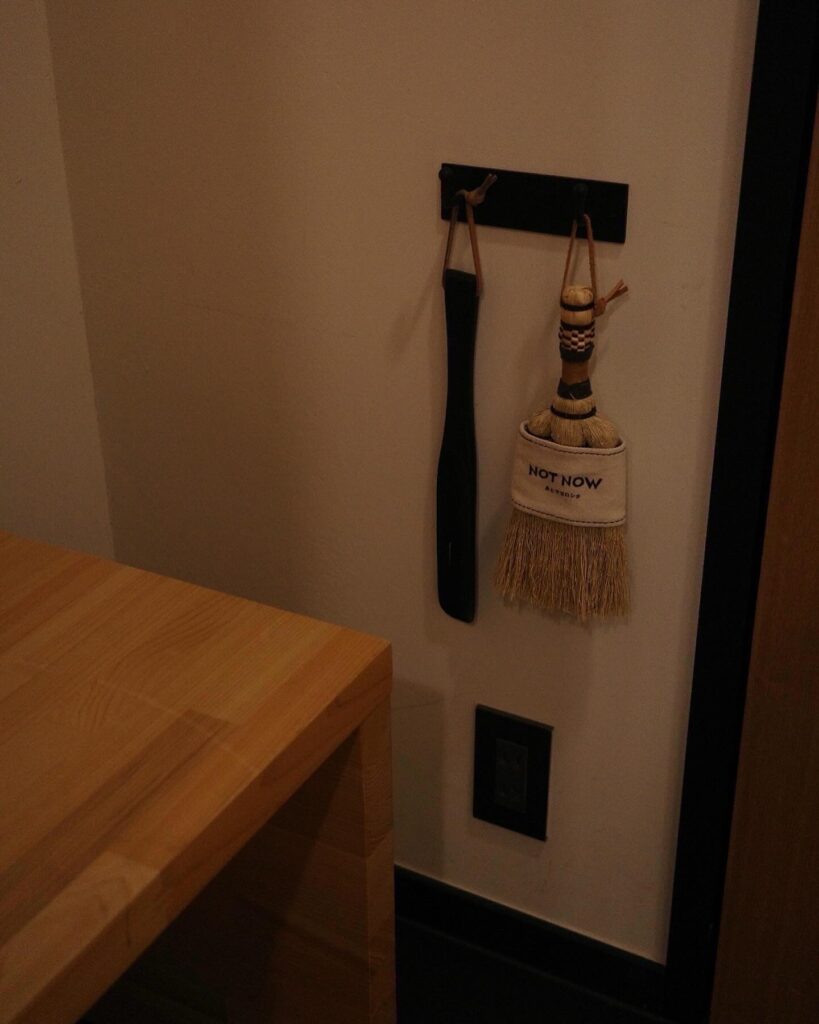
A small “Matsunoya” broom near the door that doubles as a “don’t wake me” or “no cleaning required” sign.
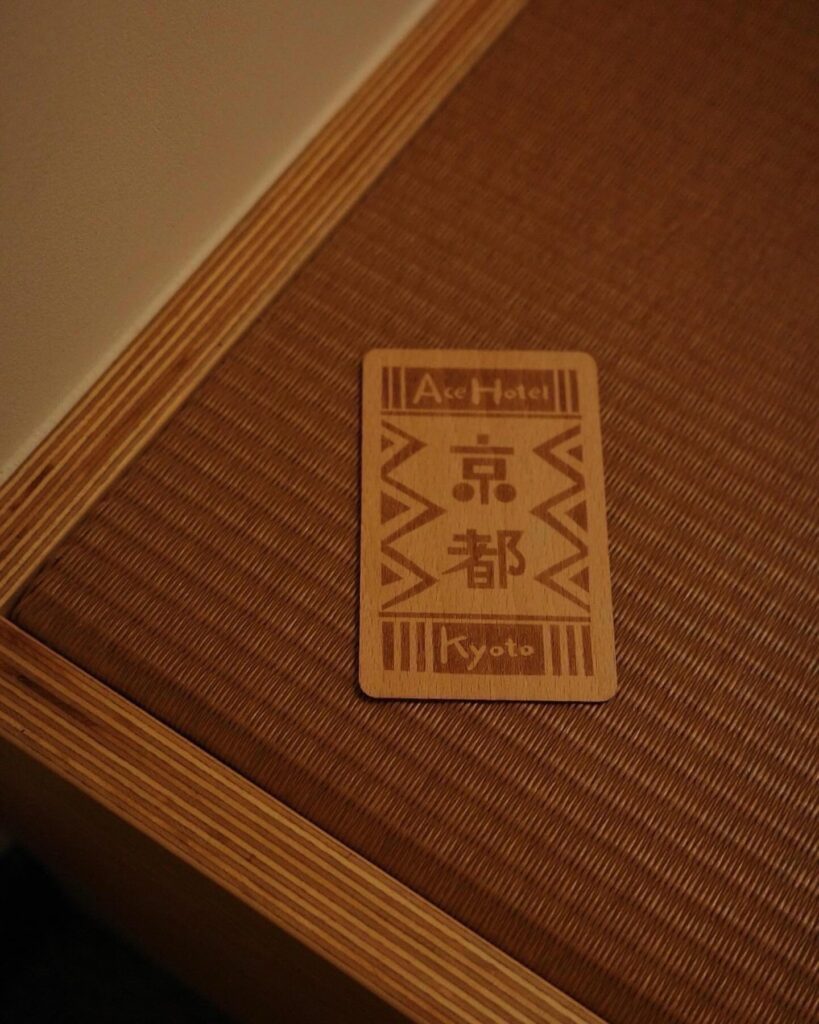
The room key, which was plastic when it first opened, is now made of wood. The small tatami area by the bed is also very neat.
Waterfront design and environmentally conscious amenities
The contrast between wood and black is striking in this simple washstand. Where wood would be blurred, the addition of black creates an industrial atmosphere. A magnifying mirror is also provided for a detailed grooming check. Amenities in the bathroom are all by Uka, and it is nice to see that even body lotion is provided in a hotel space that tends to be dry. Being highly environmentally conscious, the amenity packages are made of paper and the toothbrushes are made of bamboo. Yunoki’s calligraphy is also used on the packaging, and every detail of the design is delightful.
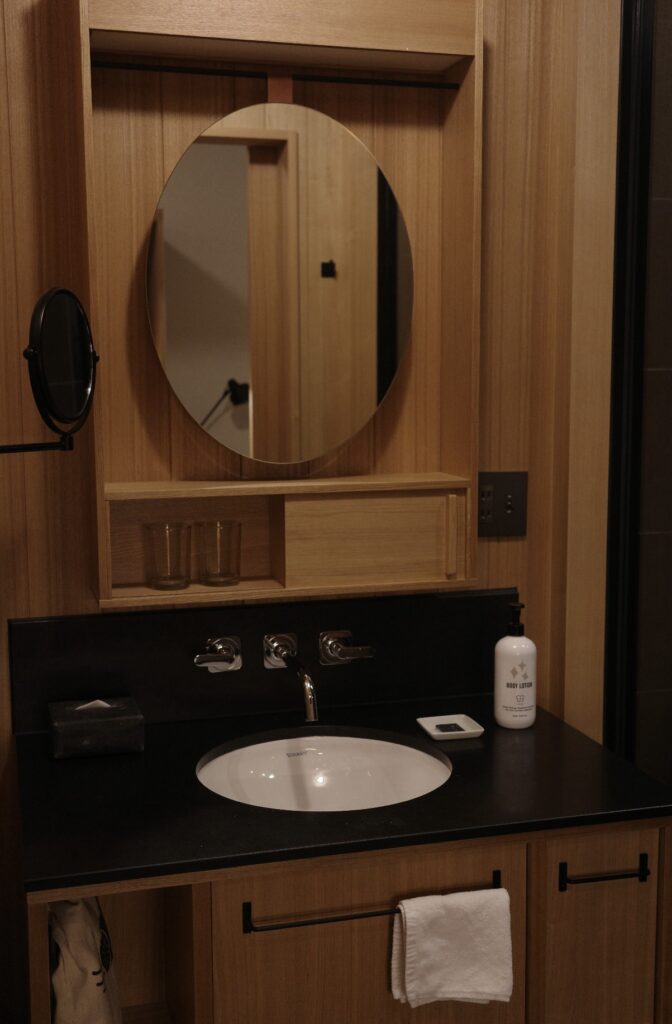
In the woody washroom, the black of the mirror and outlet cover on the left hand side pulls the space together.
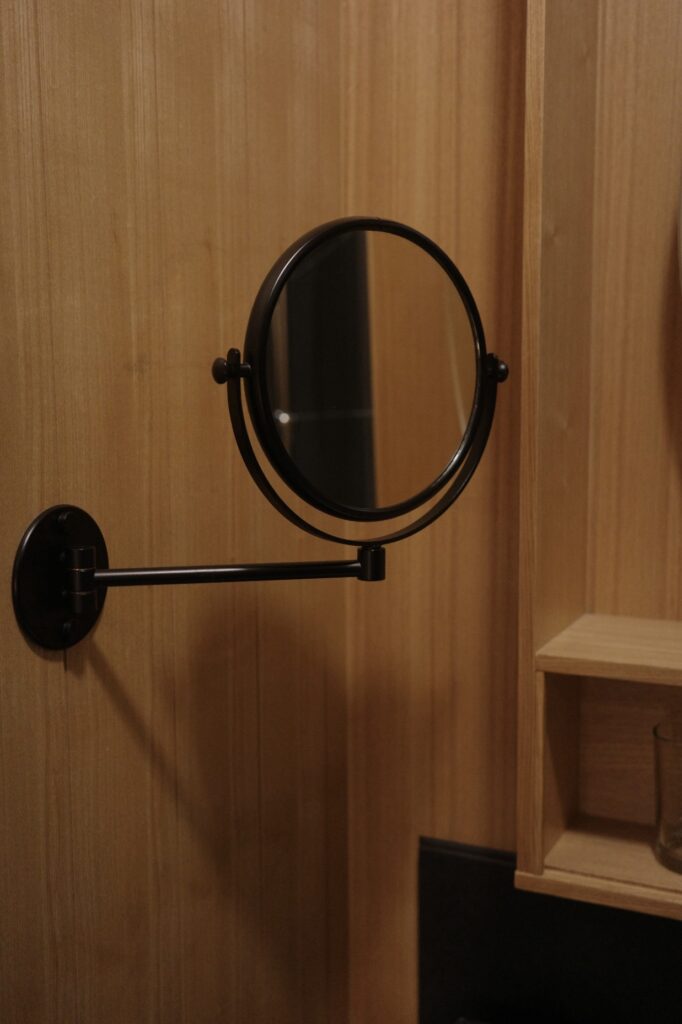
Check every detail with a magnifying glass.
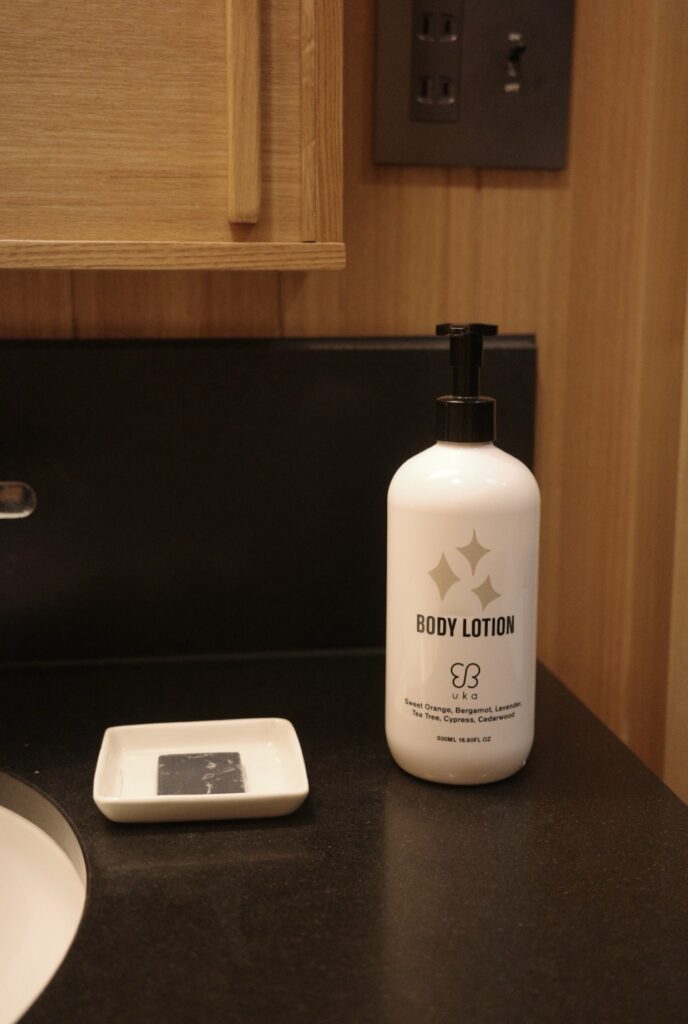
A generous amount of usable Uka body lotion. It was also sold at the Uka Shop in the Shinpukan.
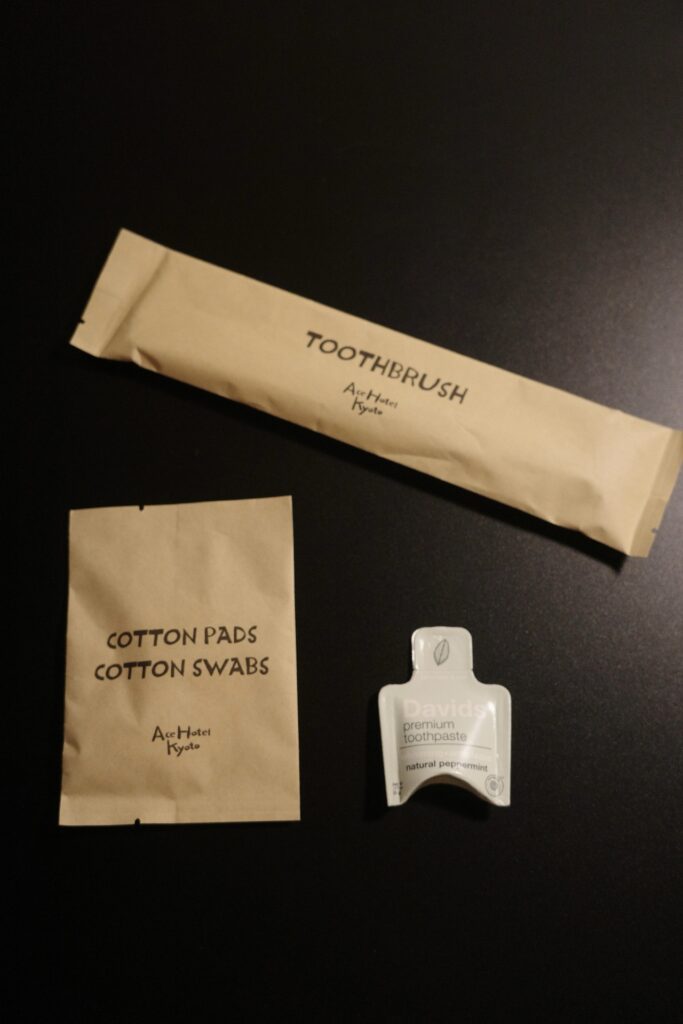
Bamboo toothbrush, toothpaste, cotton and cotton swabs (clockwise from top).
Interiors that don’t fit into any system
The interior has a Japanese essence, but mixed with a Western industrial atmosphere of steel and other materials, it has a good sense of interior design that cannot be easily dismissed as Japanese style. It’s as if an American with a deep knowledge of crafts created a room with his favorite items he purchased on his trip to Japan, and it turned out to be a great place. I think that’s exactly what my friend who was relaxing in the room with me said, “I wonder what kind of style this is! I felt that was exactly what my friend who was relaxing in the room with me said. It means that the concept of “East Meets West” is working.
Breakfast at Stumptown Coffee.
If you are a coffee lover, you have probably heard the name at least once. Stumptown Coffee Roastery, a spark plug for the third wave coffee movement that originated in Portland, U.S.A., is located adjacent to the lobby. This is the only store in Japan where you can enjoy it. Since it opens at 7:00 a.m., I had a latte and croissant here. The café latte has a good balance of bitterness and sweetness of milk, and I was happy to find a delicious café latte. The space is woody with color accents, with pop lights on the ceiling that are braided wood and Adam Pogue’s work based on the Korean pojagi style in the windows. The cafe was a personal high point of my visit, with friendly service and good coffee in a nice space.
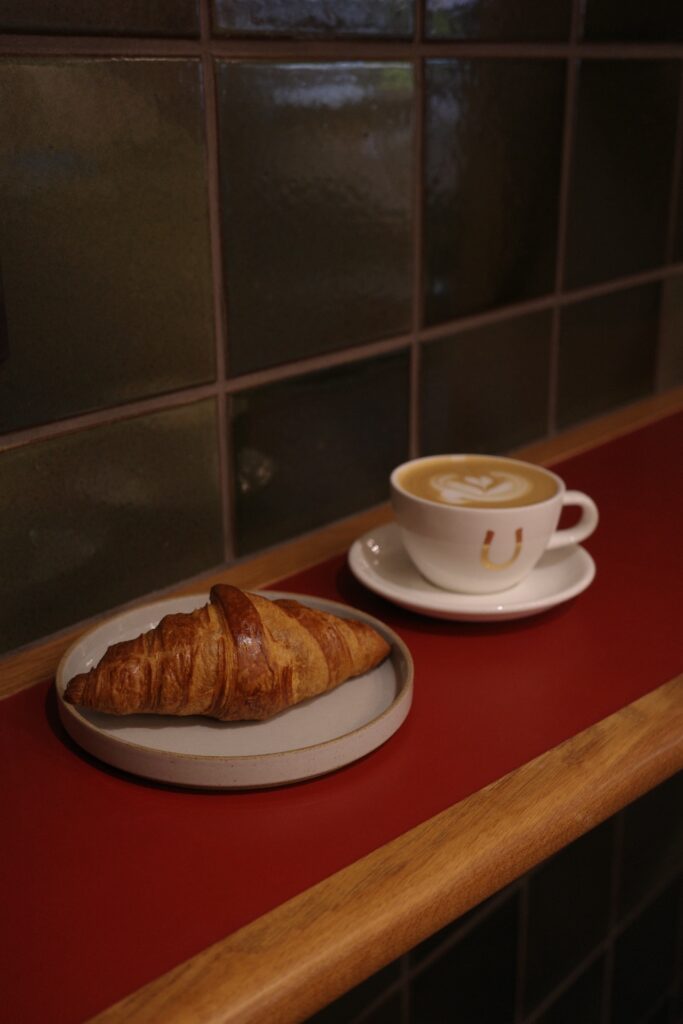
Best Matching Cafe Latte and Croissant.
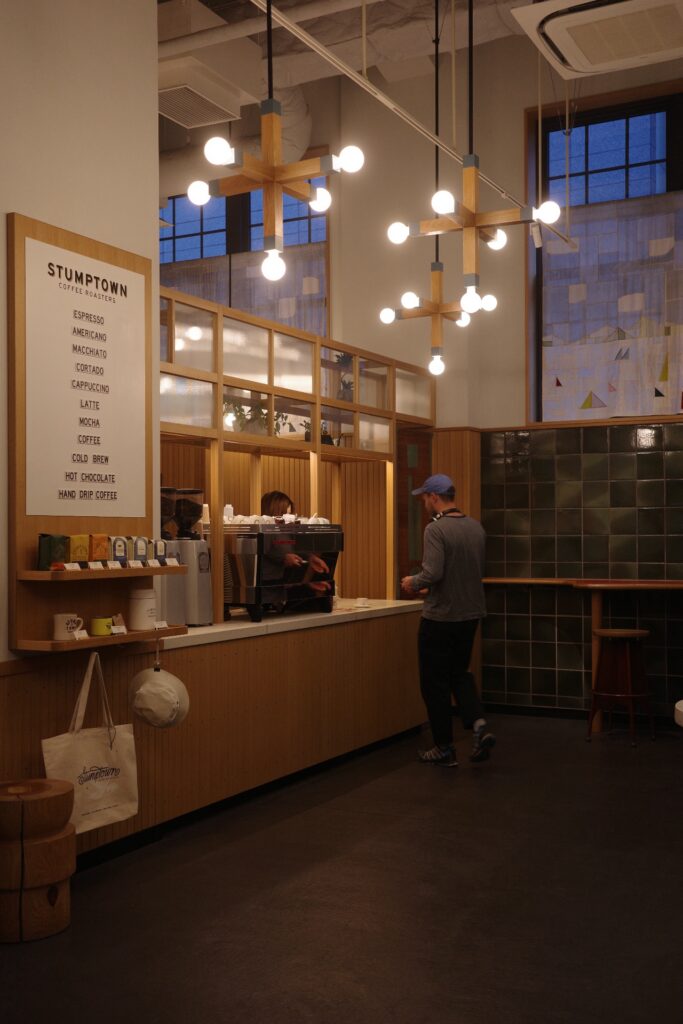
Many foreign customers are so familiar with this place that it is easy to forget that you are in Japan!
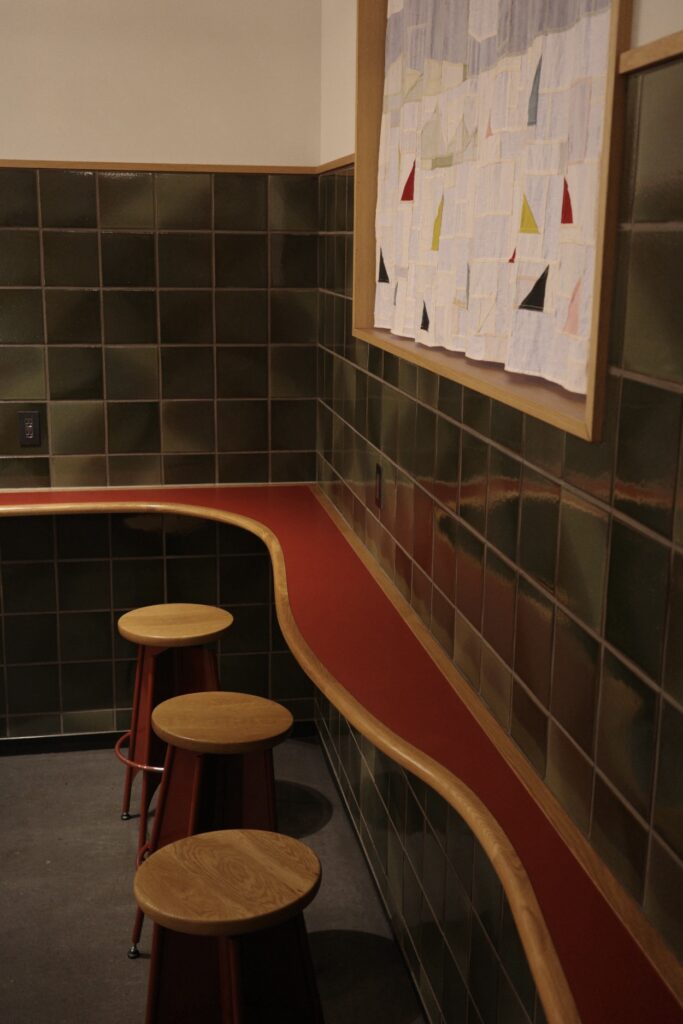
The windows are hung with textiles by Adam Pogue. The high stools, with their combination of rust color and solid wood seat, are by the creative unit graf.
Ace Hotel Kyoto
How to get to the hotel:Directly connected from “Karasuma-Oike” station, south ticket gate.
For more information, click here.

用の美を応援する
寄付する/Donation
